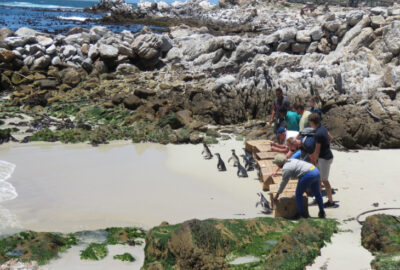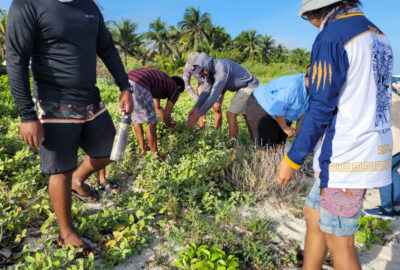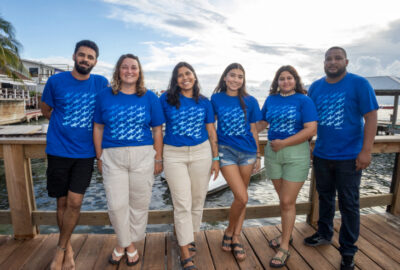Saving Caribbean Sawfish in Cuba
By New England Aquarium on Thursday, October 13, 2022

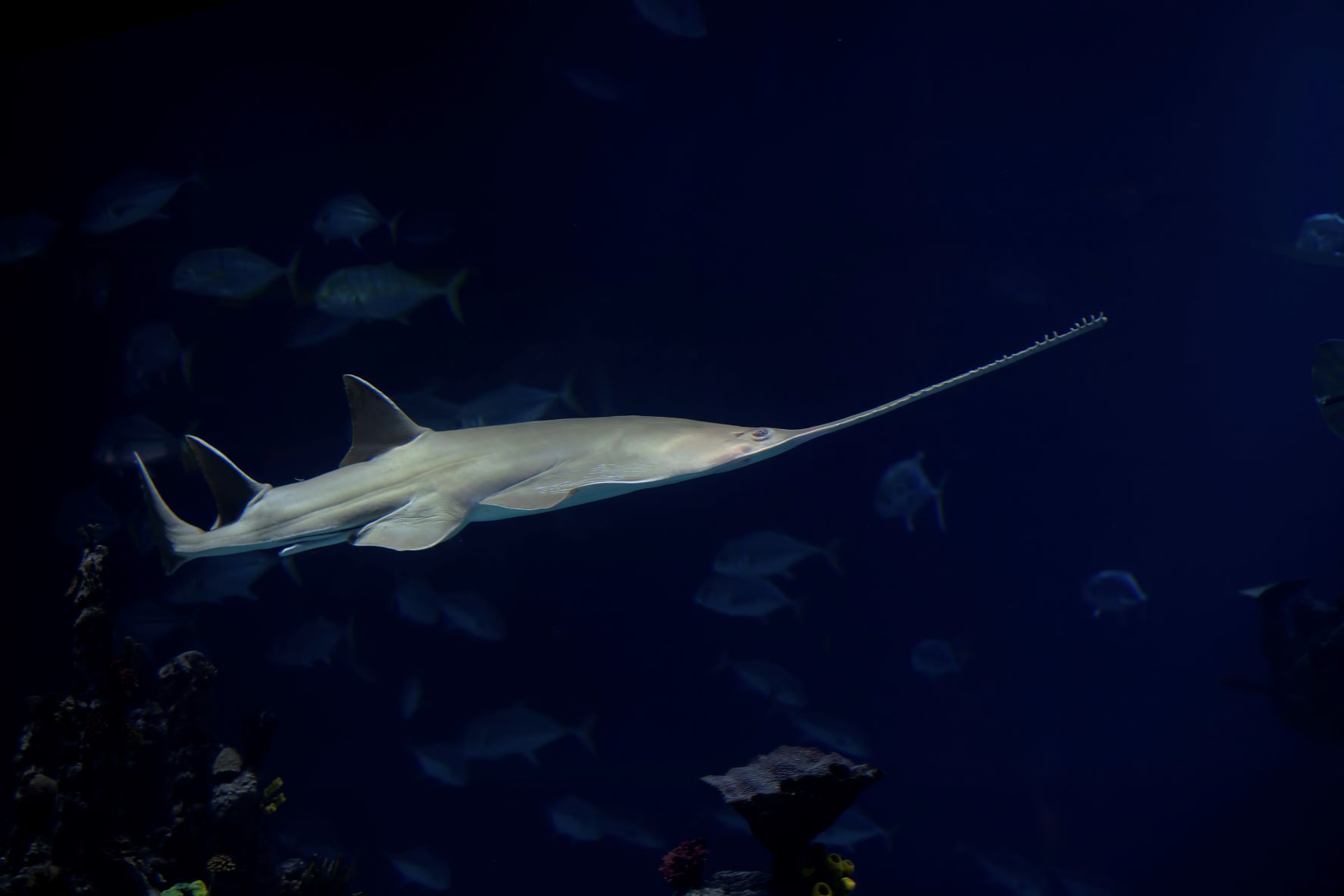
This post is one of a series on projects supported by the New England Aquarium’s Marine Conservation Action Fund (MCAF). Through MCAF, the Aquarium supports researchers, conservationists, and grassroots organizations around the world as they work to address the most challenging problems facing the ocean.
MCAF grantee Fabián Pina Amargos, Environmental Advisor of Avalon Fishing and Diving Centers and Associate Professor and Scientist of the Center for Marine Research of the University of Havana, is leading a project with Fernando Bretos and CariMar, a project of The Ocean Foundation. The Ocean Foundation’s Caribbean Marine Research and Conservation Program (CariMar) has worked in Cuba since 1998 to study marine resources shared with the United States. CubaMar’s mission is to support collaborative scientific research between Cuba, the U.S. and Mexico and to advance and inform marine conservation policy efforts in the region. In this piece, Fabian and Fernando describe their MCAF-supported work, which aims to better understand the presence and distribution of critically endangered sawfishes in Cuba and recommend research and conservation actions to enhance their protection in Cuban waters.

By MCAF grantee Fabián Pina Amargos & Fernando Bretos
The sawfishes (family Pristidae) are the world’s most threatened elasmobranchs. Elasmobranchs include sharks and rays. So, while a sawfish is indeed a fish, it is also a ray.But unlike rays, it has a “saw”—or in scientific terms, a “rostrum”—covered in teeth on both sides and extending from the front of its body.
A sawfish’s rostrum gives it an incredible hunting advantage. In fact, there are three families of sharks and rays that use saws as hunting appendages. This clever and effective foraging tool has evolved three different times.As a ray which inhabits shallow waters, the sawfish will swim through the water column using violent thrusts that allow it to stun prey. It will then swing around to pick up its prey with its mouth, which—like a ray—is on the bottom of its body.
The sawfish’s rostra has also been a curse.
The sawfish’s “rostra has been sought after for millennia by different cultures, much like ivory or shark fins. Rostra have been found in ancient Aztec burial tombs. Never quite abundant but now rare throughout its range in the Caribbean, often caught by fishing nets. While there are hope spots in Florida Bay and most recently in the Bahamas, it is extremely hard to find in the Atlantic, making conservation of the species difficult.
As part of a project called Initiative to Save Caribbean Sawfish (ISCS), and with funding from the Marine Conservation Action Fund, scientists are working with the Ocean Foundation and Shark Advocates to help find this species. Cuba is a prime candidate to find one due to its massive size and anecdotal evidence from fishers along its 600 miles of northern coastline.
Along with my partner and Cuban scientist Tamara Figueredo, we conducted a study in 2011 where we spoke with over one hundred fishers. We found conclusive evidence that sawfish were in Cuba from catch data and visual sightings. ISCS partner, Dr. Dean Grubbs of Florida State University, had tagged several sawfish in Florida and the Bahamas and independently suspected that Cuba could be another hope spot. The Bahamas and Cuba are separated only by a deep channel of water—in some places, just 50 miles wide. Only adults have been found in Cuban waters. So, the common hypothesis is that any sawfish found in Cuba have migrated from Florida or the Bahamas.
Trying to tag a sawfish is a shot in the dark.
This is especially true in a country where none have been documented scientifically. The Ocean Foundation and Cuban partners believed more information was needed before a site could be identified to attempt a tagging expedition. In 2019, we chatted with fishers going as far east as Baracoa, the far eastern hamlet where Christopher Columbus first landed in Cuba in 1494. These discussions not only revealed five rostra collected by fishers over the years, but helped pinpoint where tagging could be attempted. The isolated key of Cayo Confites in north central Cuba was selected based on these discussions and the vast, undeveloped expanses of seagrass, mangrove, and sand flats, which sawfish love.
In January, Fabián and Tamara spent days laying long lines from a rustic, wooden fishing boat.
After five days of catching nearly nothing, we headed back to Havana with their heads down. On the long drive home, we received a call from a fisher in Playa Girón in southern Cuba, who pointed them to a fisher in Cardenas. Cardenas is a small Cuban city on Cardenas Bay. Like many bays on the north coast, it would be considered very “sawfishy.”
Upon arriving in Cardenas, the fisherman took them us his home and showed us something that rattled all of their preconceptions. In his hand, the fisher held a small rostrum, considerably smaller than anything they had seen. By the looks of it, he was holding a juvenile. Another fisher found it in 2019 while emptying his net in Cardenas Bay. Sadly, the sawfish was dead. But this find would provide preliminary hope that Cuba might host a resident population of sawfish. The fact that the find was so recent was equally promising.
Genetic analysis of tissue of this juvenile, and the other five rostra, will help piece together whether Cuba’s sawfish are simply opportunistic visitors or part of a homegrown population. If the latter, there is hope of implementing fisheries policies to protect this species and go after illegal poachers. This takes on additional relevance as Cuba does not see sawfish as a fishery resource.
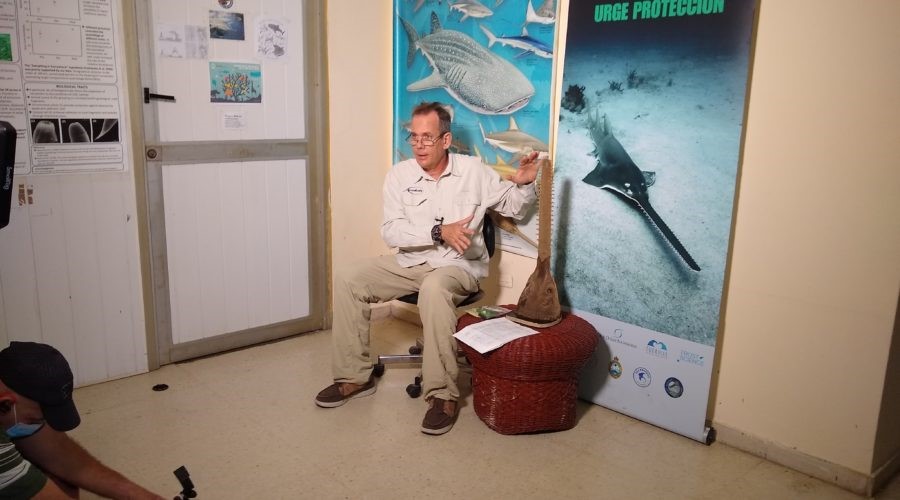
The story of the Cardenas sawfish is an example of what makes us love science.
I love science because even small discoveries like the one at Cárdenas Bay can change long held perceptions. It’s hard to get excited about a dead young ray. But, this ray may provide hope for its peers. Science can be a painstakingly slow process. However, the discussions with fishers are answering questions.
This find is preliminary, and after genetic analysis is completed, it could still mean Cuba’s sawfish are a migratory population. But we have found new energy to cement this species’ legacy in Cuba and there is hope for a new era of protection.

